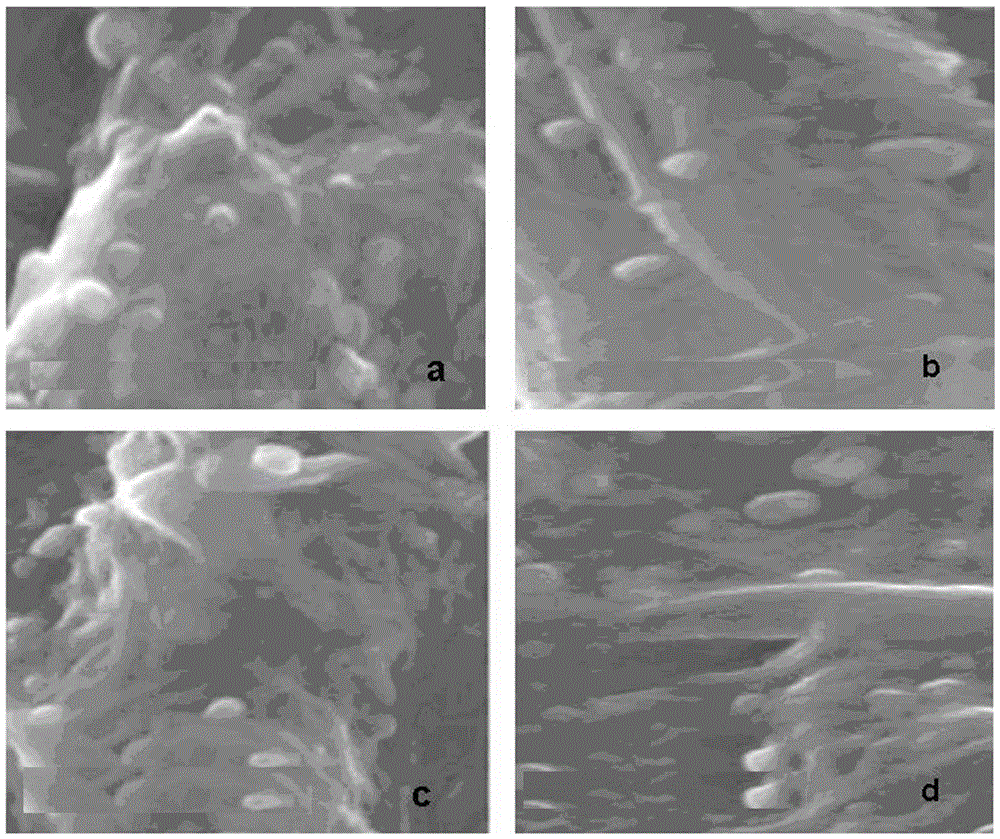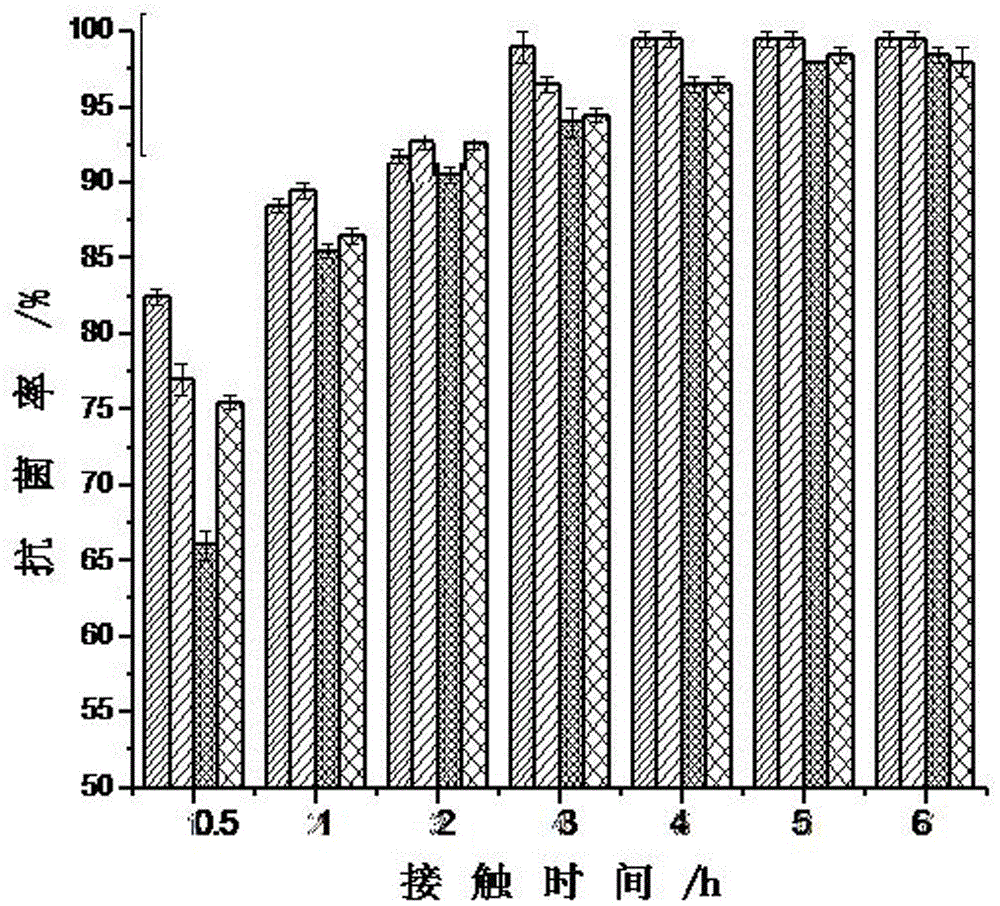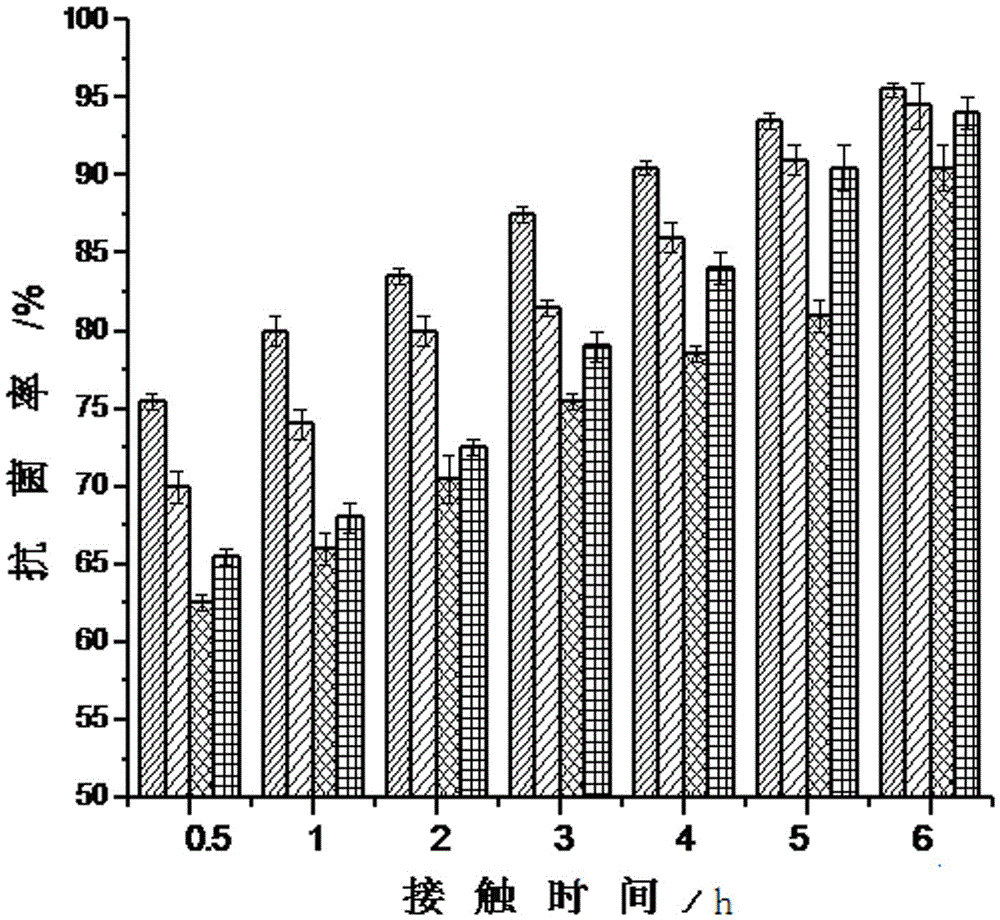Silver-loaded cotton fabric antibacterial material and preparation method thereof
An antibacterial material, cotton fabric technology, applied in the directions of plant fibers, textiles and papermaking, fiber processing, etc., can solve the problems of increased reaction difficulty, influence, and influence on the loading efficiency and uniform distribution of functionalized ions, and the preparation method is simple and easy. control, wide range of sources, stable performance and quality
- Summary
- Abstract
- Description
- Claims
- Application Information
AI Technical Summary
Problems solved by technology
Method used
Image
Examples
Embodiment 1
[0017] 5g of pure cotton cloth (containing 100% cotton), washed with distilled water, immersed in 50ml of 2% fatty acid polyoxyethylene ester solution by mass percentage, and taken out after 30min. AgNO at 0.1M 3 20% by mass of ammonia water was added to the solution to obtain a clear silver ammonia solution. Dip the soaked cotton fabric into 100ml silver ammonia solution, and heat at 40°C for 30min. After the reaction, wash the silver-loaded cotton fabric with distilled water, put it into 150ml of 1% glucose solution by mass percentage, wash the surface with distilled water after 60min, and dry it at 30°C. figure 1 SEM photos of silver-loaded pure cotton cloth, from figure 1 a It can be seen that silver is distributed evenly in the cotton fibers.
Embodiment 2
[0019] 5g nylon cotton (containing 75% cotton, 25% nylon), after washing with distilled water, immersed in 50ml 2% fatty acid polyoxyethylene ester solution by mass percentage, and took it out after 30min. AgNO at 0.3M 3 Add 25% ammonia water in the solution to obtain a clear silver-ammonia solution. Dip the soaked cotton fabric into 100ml of silver ammonia solution, and heat at 50°C for 45min. After the reaction, wash the silver-loaded cotton fabric with distilled water, put it into 150ml of 3% glucose solution by mass, wash the surface with distilled water after 60min, and dry it at 30°C. figure 1 For the SEM photo of silver-loaded brocade cotton, from figure 1 b It can be seen that silver is evenly distributed in nylon cotton fiber.
Embodiment 3
[0021] 5g of polyester cotton (33% cotton, 67% polyester), washed with distilled water, immersed in 50ml of 5% fatty acid polyoxyethylene ester solution by mass percentage, and taken out after 30min. AgNO at 1M 330% by mass of ammonia water was added to the solution to obtain a clear silver-ammonia solution. Dip the soaked cotton fabric into 100ml silver ammonia solution, and heat at 70°C for 35min. After the reaction, wash the silver-loaded cotton fabric with distilled water, put it into 150ml of 7% glucose solution by mass percentage, wash the surface with distilled water after 60min, and dry it at 30°C. figure 1 SEM photo of silver-loaded polyester cotton, from figure 1 c It can be seen that silver is evenly distributed in the polyester-cotton fiber.
PUM
 Login to View More
Login to View More Abstract
Description
Claims
Application Information
 Login to View More
Login to View More - R&D
- Intellectual Property
- Life Sciences
- Materials
- Tech Scout
- Unparalleled Data Quality
- Higher Quality Content
- 60% Fewer Hallucinations
Browse by: Latest US Patents, China's latest patents, Technical Efficacy Thesaurus, Application Domain, Technology Topic, Popular Technical Reports.
© 2025 PatSnap. All rights reserved.Legal|Privacy policy|Modern Slavery Act Transparency Statement|Sitemap|About US| Contact US: help@patsnap.com



